Ayurveda Guide For Spring Season
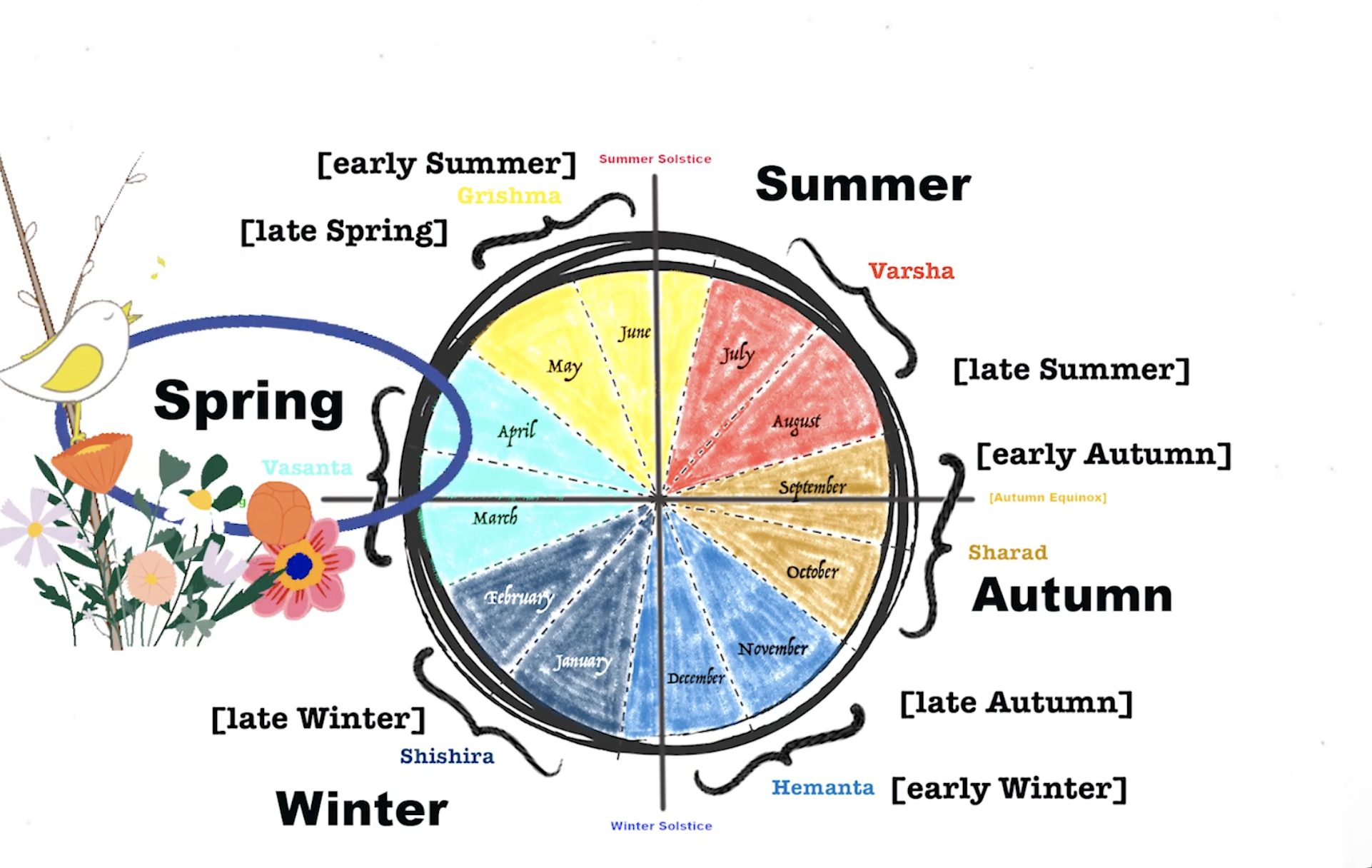
Spring is a time of new beginnings. This is a time when nature comes to life.
This is a time when it begins to warm from the freezing cold of the previous winter.

Ayurveda explains that “accumulated kapha” from late winter which solidified due to extreme cold now begins to liquefy by the warmth of spring which, consequently decreases Agni — which then, may cause various digestive conditions along with other numerous health conditions.
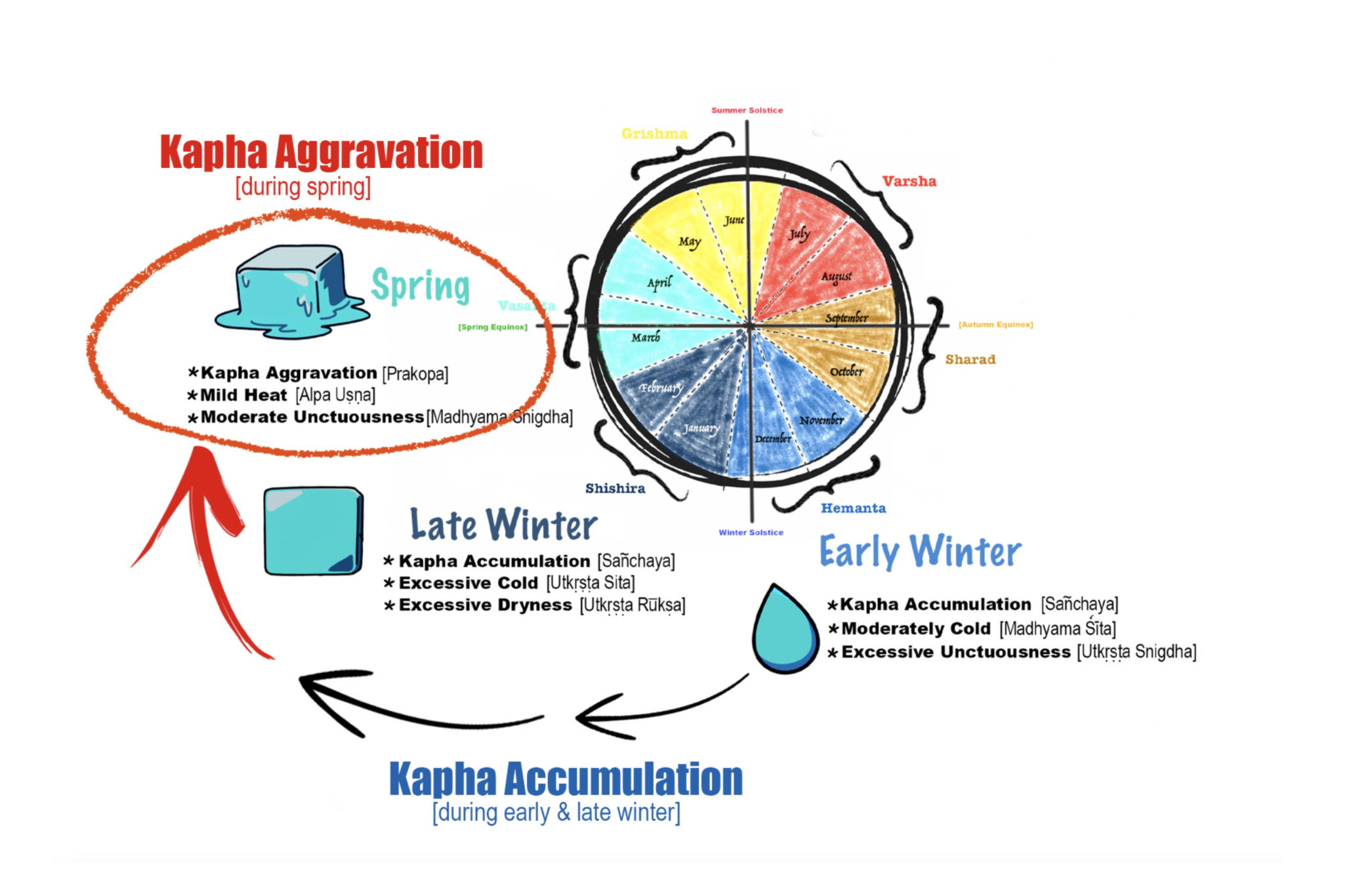
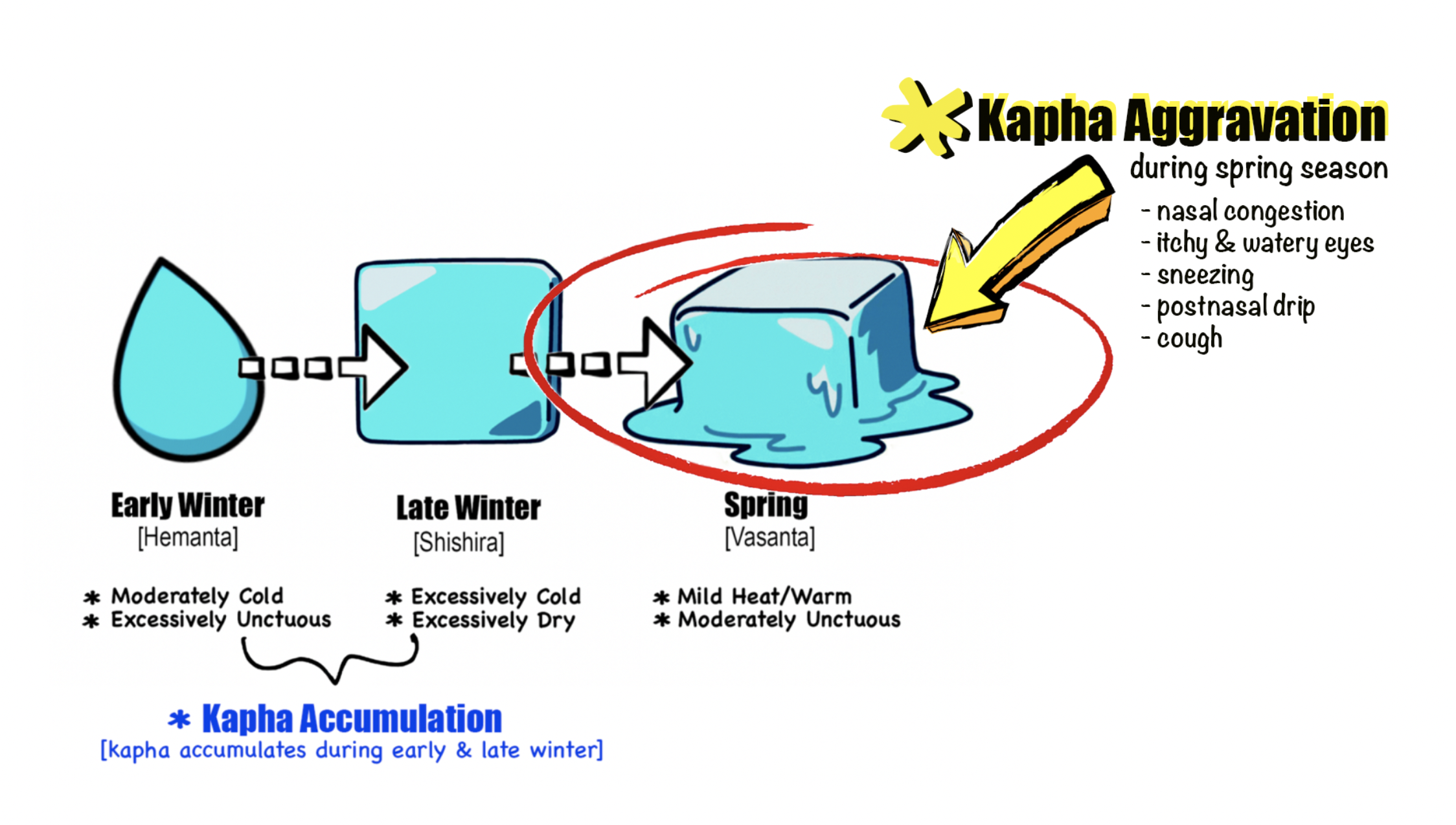
This can be likened to the snow which develops upon mountain tops. As the snow melts, this floods the valley below. Similarly, kapha which developed and solidified due to the extreme cold of winter now begins to melt and begins to flood various regions of the body. This tends to impair digestion and manifests into kapha-related conditions such as cough, cold, congestion and seasonal allergies.

Due to the risk of severely impairing Agni, it’s advised to eliminate aggravated kapha and one of the quickest and most effective ways of eliminating kapha is through the process of vamana; therapeutic vomiting. Also effective, is nasya which helps to eliminate residual dosha.
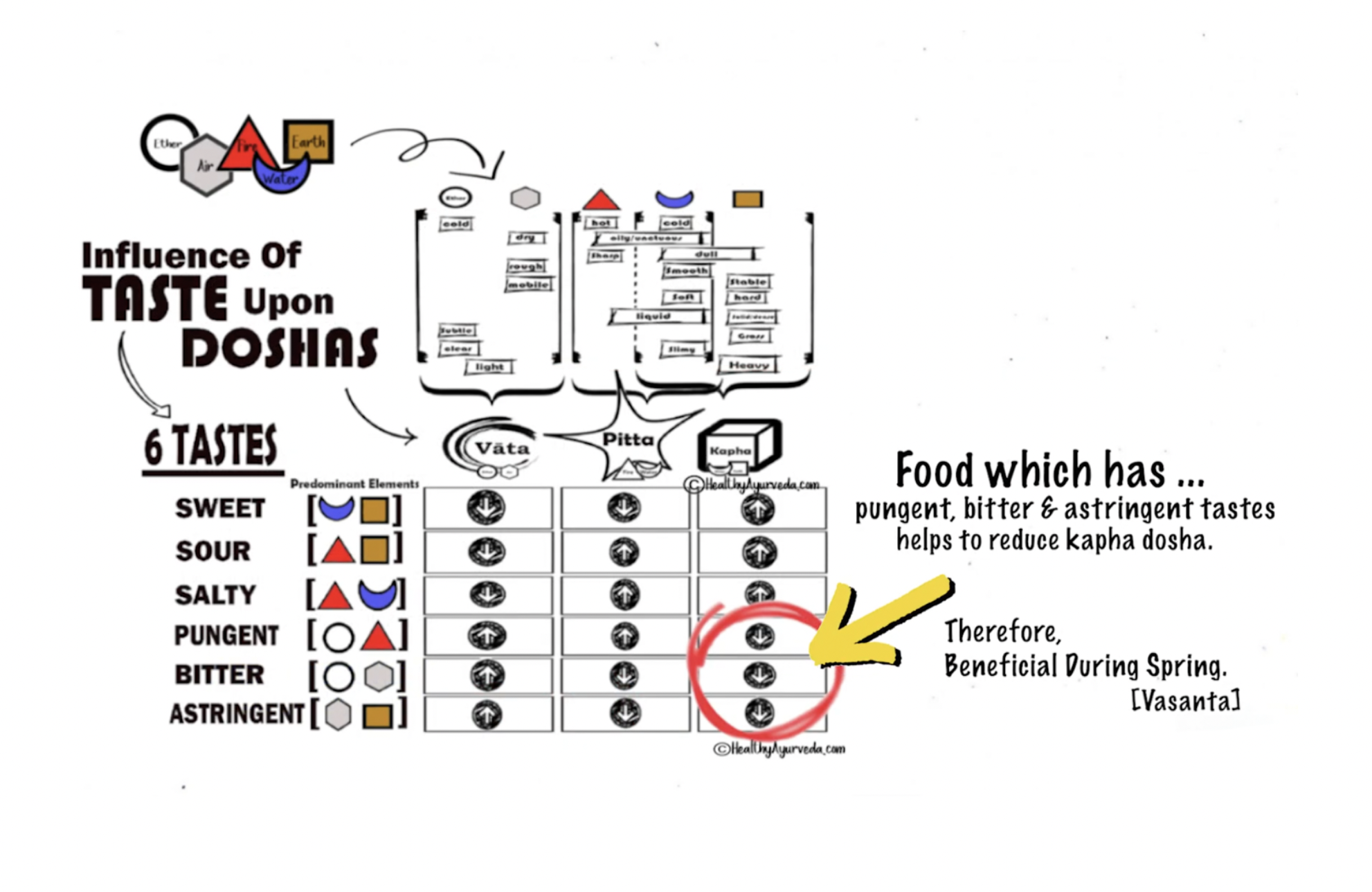
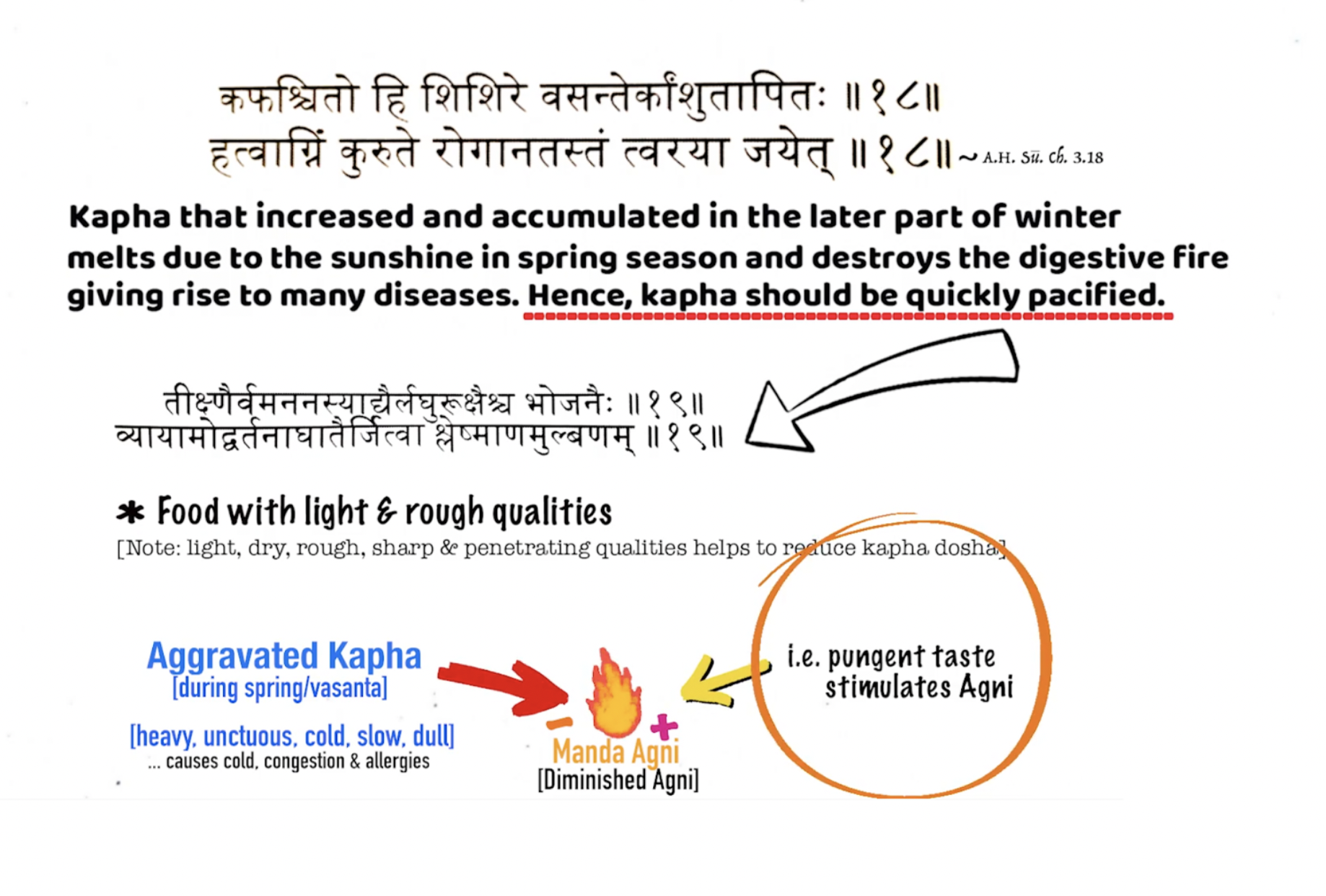
Regarding diet, it’s advised to consume food which is light, dry and easy to digest.
Agni is impaired due to aggravated kapha and light & dry qualities helps to reduce kapha dosha. Similarly, consuming food which is predominately bitter, pungent & astringent in tastes helps to reduce Kapha while, simultaneously, helping to improve Agni.
We can appreciate the change in dietary considerations from winter when Agni was strong and when it was advised to consume unctuous, heavy and sweet food.
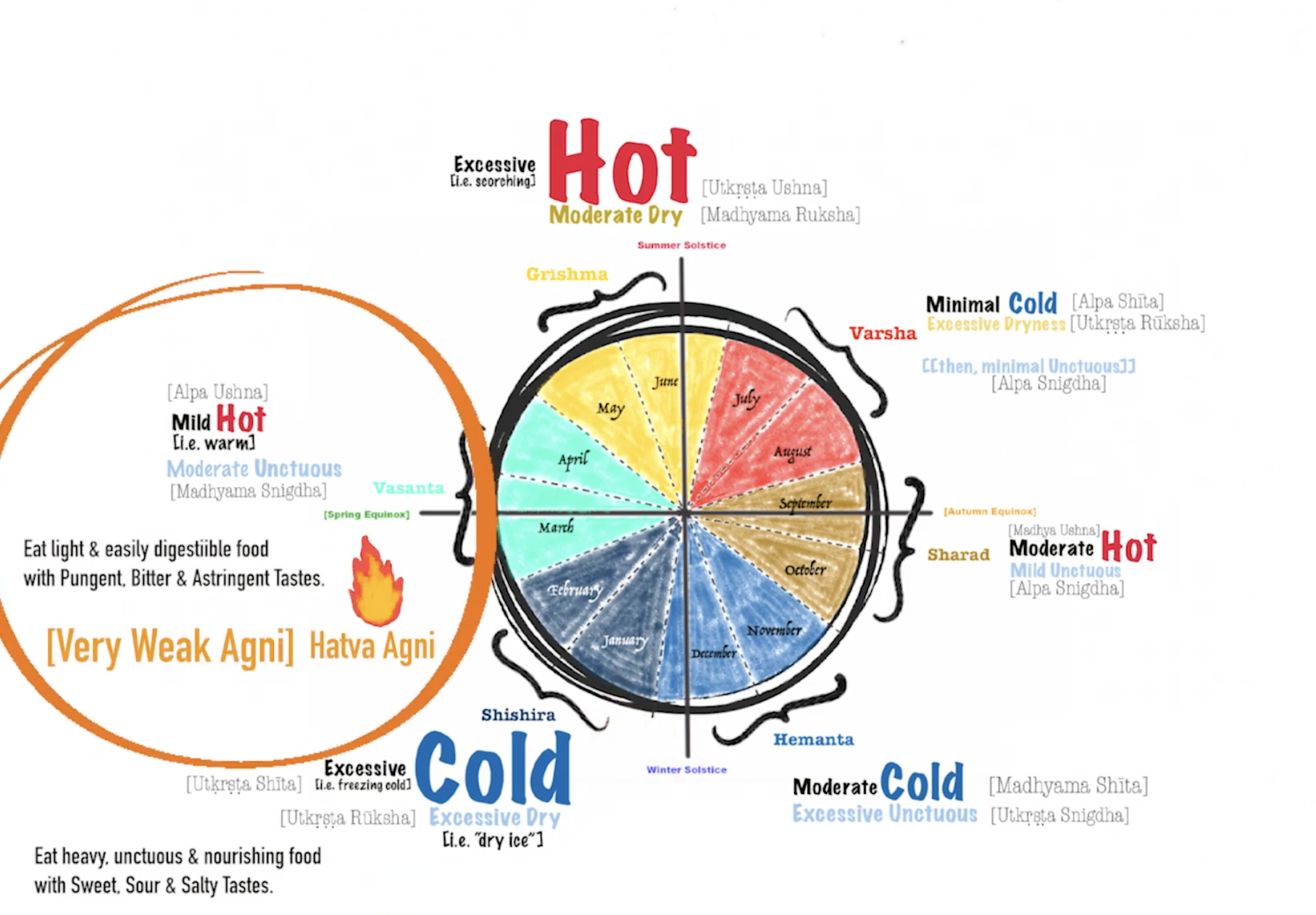
However, during Spring, it’s advised to have food which is light, dry & rough. This includes food such as: old grains; i.e. wheat and/or barley that’s over a year old. Similarly, one should consider old jaggery and, of course, steamed vegetables which are easily digested and that which helps to reduce kapha dosha.

Exercise is advised such as a brisk walk to half of one’s physical capacity. Since kapha has been solidified within the body throughout winter, this is an ideal time for a deep-tissue massage and the application of dry powder to the body. Often we’re accustomed to applying oil to the body. However, since kapha is already aggravated, Udvarntana [dry massage] is advised.

After bathing — one should then apply a mixture or a combination of:
Camphor, Sandalwood, Agarwood & Saffron to the skin.
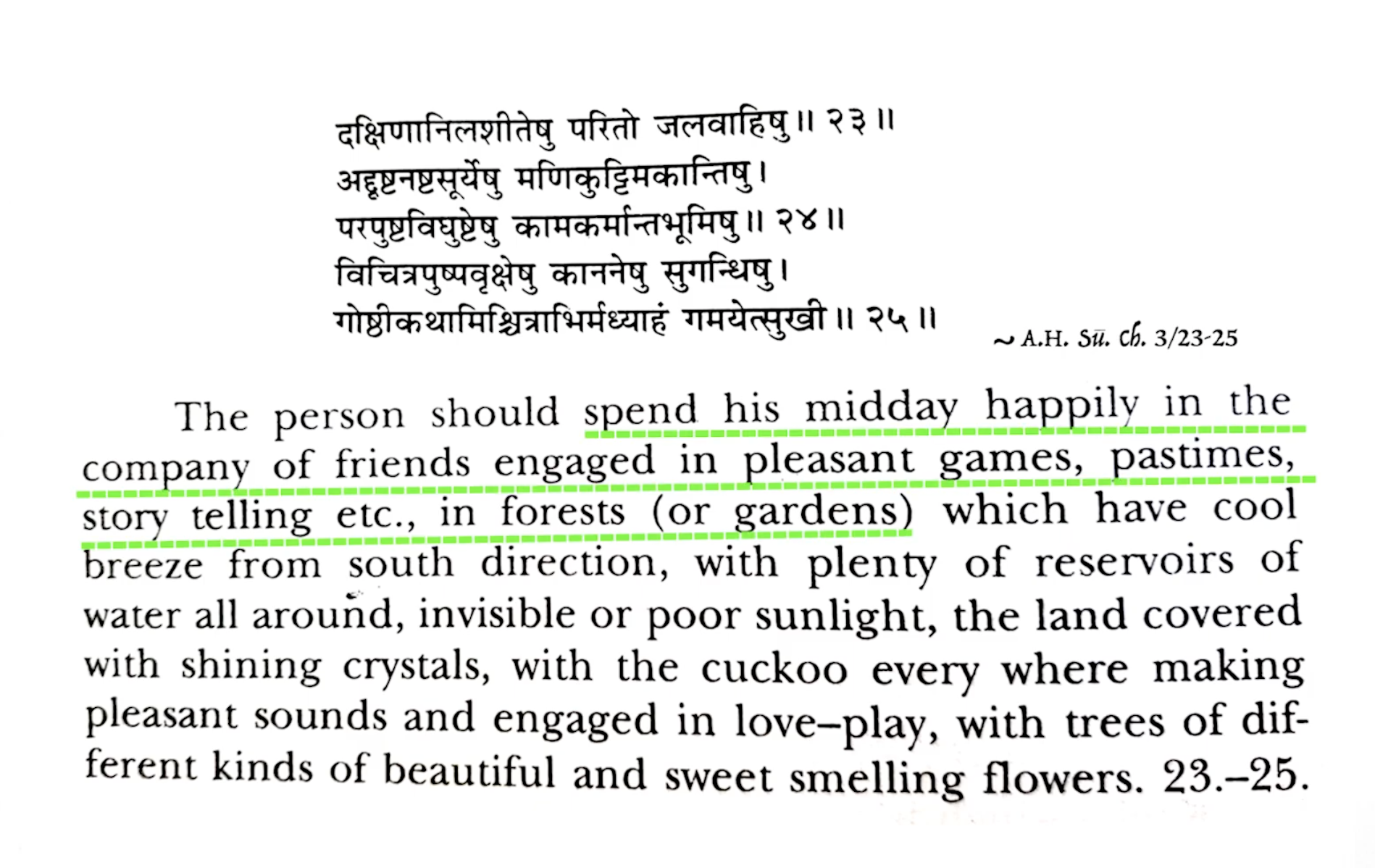
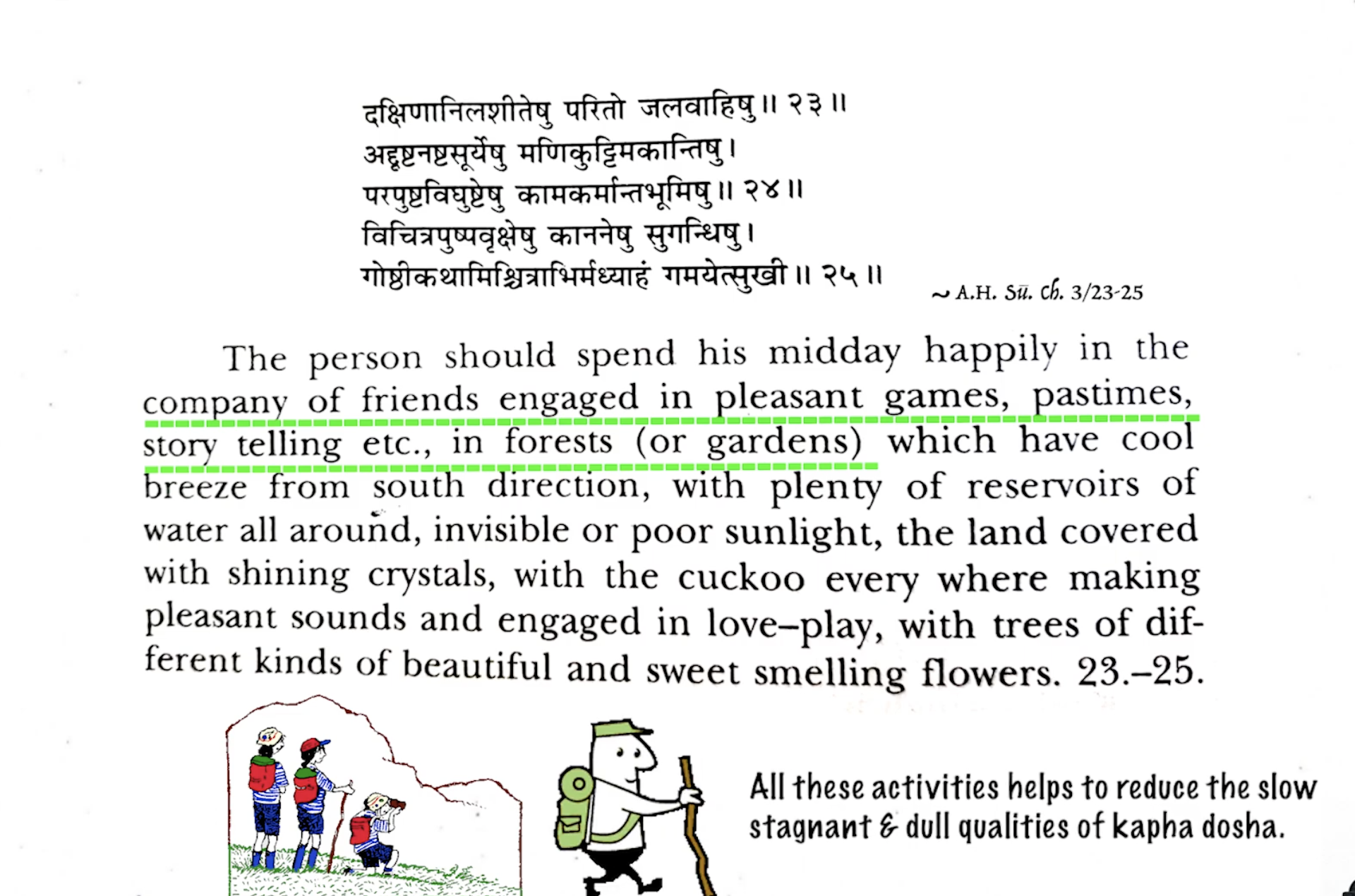
Spring is a season for which things come to life. This is a time Āyurveda recommends “liveliness” . Liveliness in the sense of enjoying quality time with family & friends, by enjoying conversation and story-telling amongst the serene beauty of nature. One should enjoy the beauty of romance with one’s significant other.
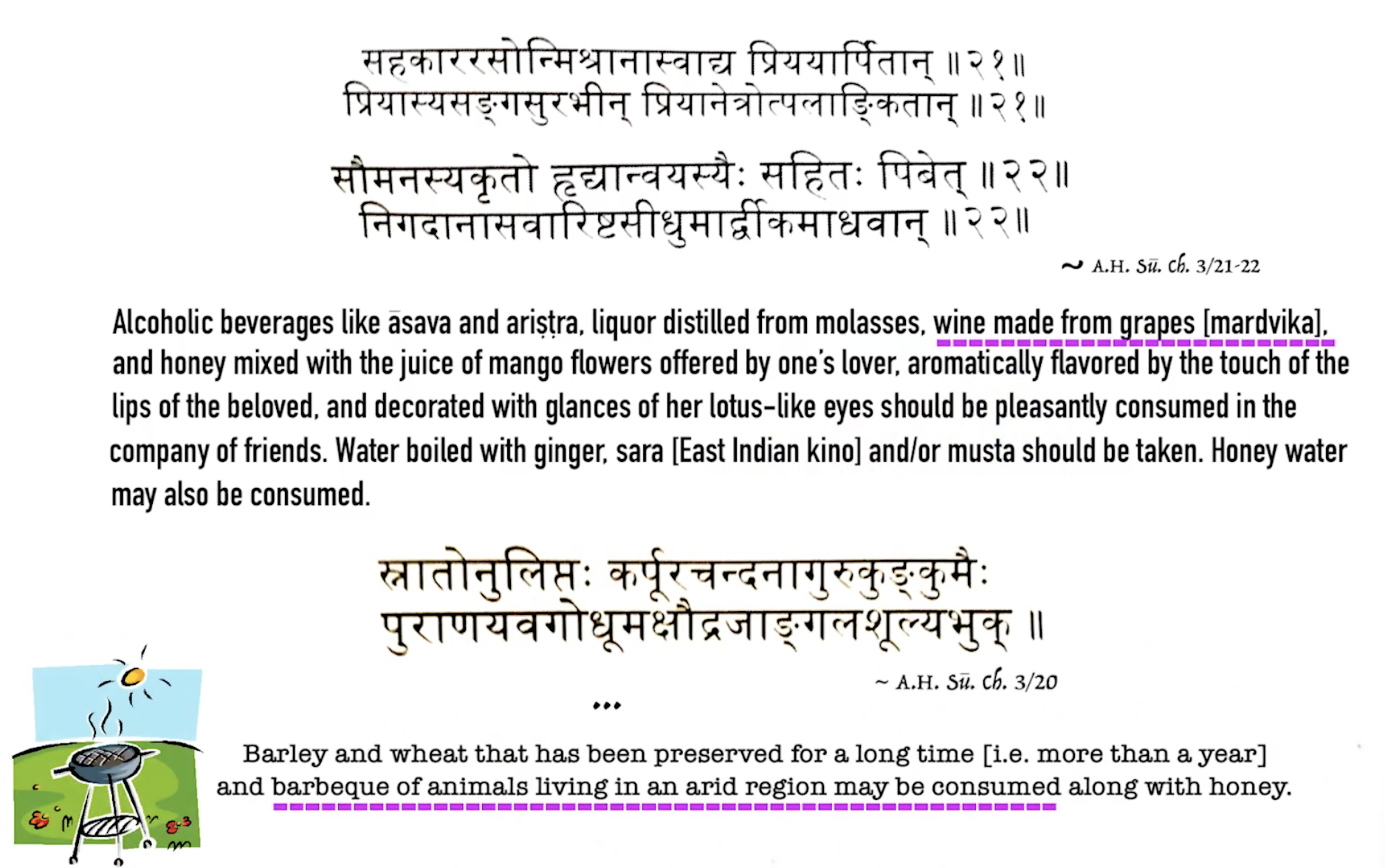
Having fermented drinks and enjoying meat which has been roasted over a fire. All these activities promotes being social, being lively as opposed to being isolated which may tend towards laziness. Such sedentary lifestyle inevitably leads to napping during the day which, of course, would further increase kapha dosha.
On the contrary, being amongst others in nature pomotes liveliness
… all of which helps to reduce kapha dosha.
Various drinks to consider during vasanta include:
– āsava, arishta, sīdhu [or fermented sugar cane juice]
– fermented grape juice
– water mixed with honey
– or water that’s boiled and mixed with mustā
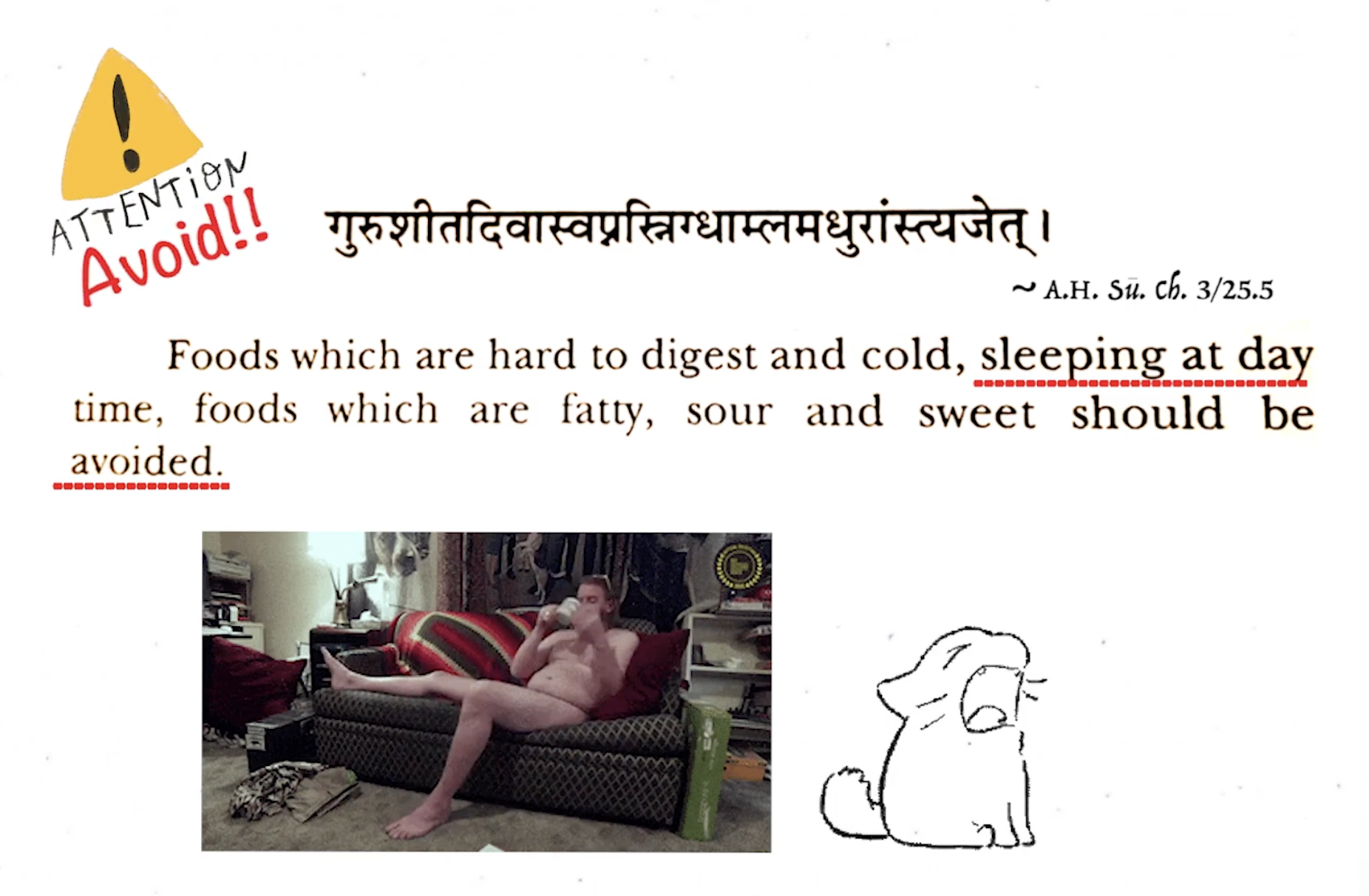
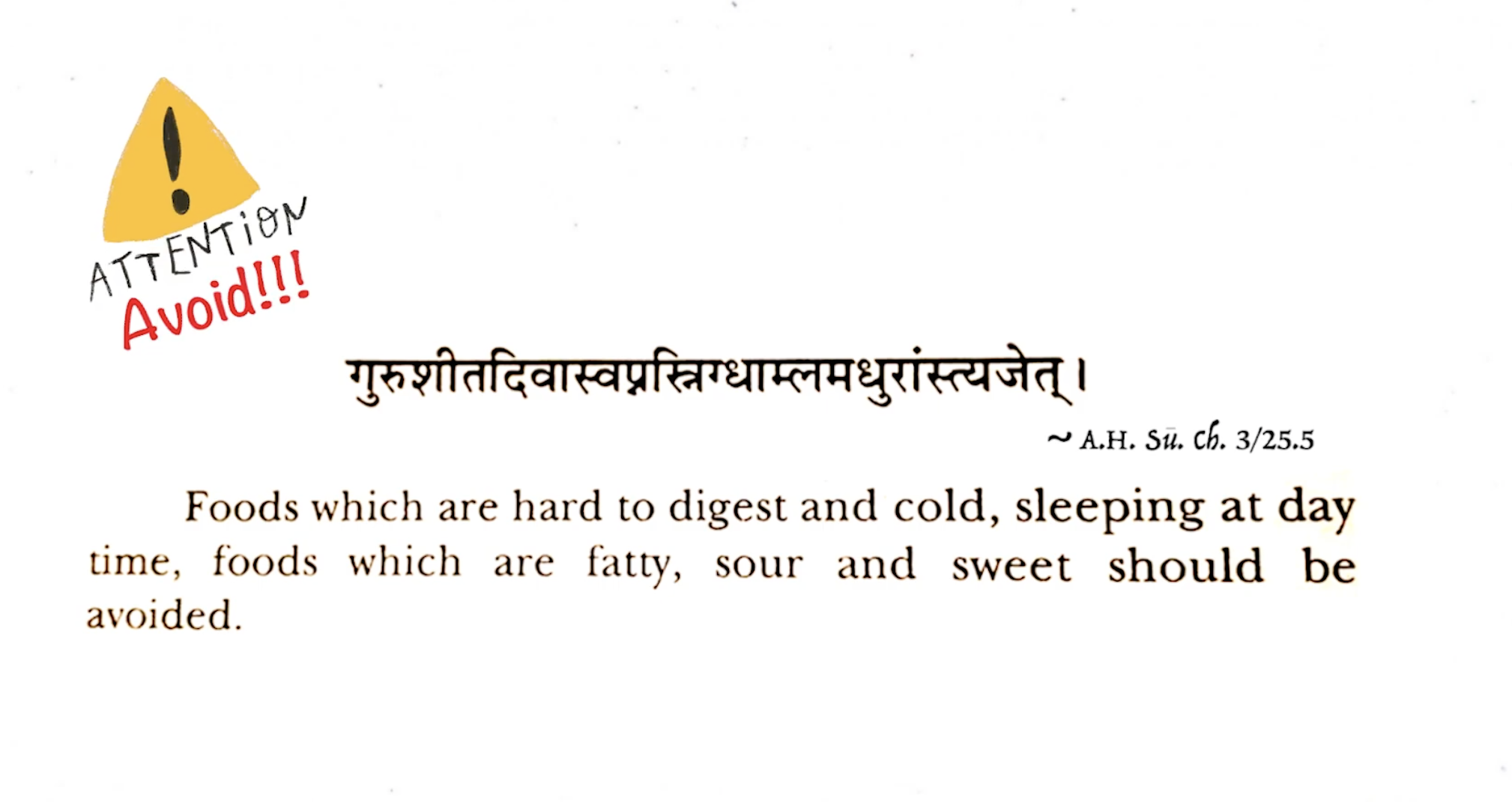
That which should be avoided during Vasanta are:
– food which is heavy and difficult to digest
– food which is unctuous, sweet and sour in tastes
– avoid a sedentary lifestyle such as sleeping during the day
… all of these will further increase kapha dosha.
![Ayurveda Guide For Spring Season [Vasanta]](https://healthyayurveda.com/wp-content/uploads/2022/03/Spring-Intro-on-cycle-wheel-1050x600.png)

